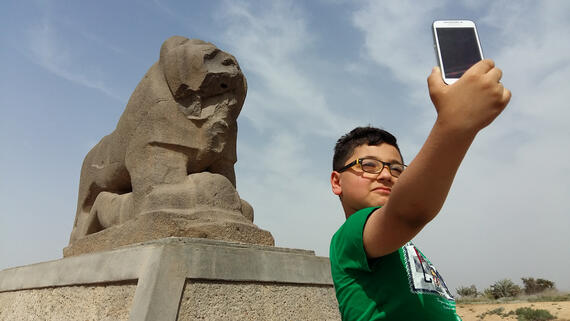Public Monuments, Public Values

World Monuments Fund President & Chief Executive Officer Joshua David reflects on the symbolism of public monuments.
............................
In recent days, images of hatred, bigotry, and violence in Charlottesville, Virginia, have flooded our screens. White supremacists, neo-Nazis, and alt-right activists have taken to the streets in a shocking display of racism that has stunned and saddened us all, and raised serious questions about our beliefs as Americans.
The trigger for this blood-chilling turn of events was the decision to remove a statue of Confederate Army General Robert E. Lee from a city park. As an organization committed to protecting and conserving monuments around the world, we feel compelled to address the symbolism of monuments like this one and how decisions about protecting them or retiring them reflect our most important values.
A public monument commemorates a person or event, generally reflecting the sentiment of the individual or group that commissioned it. But opinions and values change over time. Many of the communities and individuals that erected celebratory statues of Confederate heroes in the 20th century did so in resistance to the loss of the Civil War, with the intent of bolstering a racist social structure centered on white supremacy and Jim Crow laws. As local and national values evolved, these statues have become unacceptable to their communities, and the country as a whole. The decision to remove them reflects prevailing local and national values, and yet it has emboldened hate groups, who claim that history is being rewritten.
We have seen the alteration, removal, and destruction of monuments time and time again, throughout history. In some cases, it reflects an attempt by an invading force to deny the existence of another people’s heritage and history. But in other cases, like this one, it is a decision that is taken up by a community when it finds that a monument stands in stark, disturbing opposition to their current ideals.
To place something “on a pedestal,” either literally or figuratively, is to make it an object of veneration. That’s why so many of the statues in question were placed on pedestals in the first place: to create hero worship around the Confederacy and to bolster a system of state-sanctioned white supremacy. This is why we concur that removing these statues today is the right course of action. Only then can a conversation ensue about how to treat such works and what context might be appropriate for artifacts that represent this sad and shameful part of our national history.
World Monuments Fund looks at conservation of historic sites as a way to bring people together, as a celebration of diversity and the richness of cultural expression that springs from it. The image you see above depicts the ancient Lion of Babylon. World Monuments Fund is proud of our partnership with the Iraq Board of Antiquities to restore this global treasure. The United States and Iraq, two nations once engulfed in a war, have come together around this statue to conserve an iconic piece of heritage. The Lion of Babylon was already a revered national symbol of Iraq, and the act of international partnership to restore it has also made the statue a symbol of reconciliation and hope, richly deserving of being placed on a pedestal.
